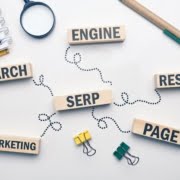How to Define Your Target Audience for SEO?
Understanding your target audience is fundamental to your SEO campaigns. Without understanding who your target audience is, your SEO campaigns will go directionless and will certainly not yield the desired results.
As a marketer or an SEO professional, you should define your target audience: what problem do they face, and how are they looking to solve it? It also seeks to answer where they’re most likely to hang out to get their answers or solutions.
The answers to these questions above helps you to create content for your marketing initiatives, which appeals to and engages your target audience based on the information above.
But first, let’s get down to the basics: what is a target audience? Simply put, your target audience is the group of people you want to attract to your business via online and offline mediums. When it comes to SEO, the target audience refers to the prospects and current customers searching for businesses like yours on search engines.
There are quite a few variables that define your target audience. They’re:
- Gender
- Age
- Sex
- Location
- Purchasing Power
- Buying Behavior
- Education
Why Do You Need to Define Your Target Audience?
Marketing involves sending the right message to the right people and at the right time. And to know which people you want to target, how you would target them and where all depend on who your target audience is. You can’t craft a marketing message that appeals to people without knowing who they are and what they want.

Defining your target audience will help you to:
- Research for relevant keywords to optimize.
- Attract traffic to your website
- Create relevant and compelling content for your users to engage them.
- Maximize conversions for your business.
How To Define Your Target Audience?
The first thing that may come to your mind is, why not target everyone? The short answer is it’s never going to work.
Your marketing appeal isn’t going to work on everyone. It has to be focused and narrow to get the maximum number of conversions possible. A generic message projected to thousands without personalization won’t bring you any SEO success whatsoever.
So here are a few tips that will help you to identify and define your target audience for SEO:
-
Know Current Customers
Knowing your current customer’s buyer personas is the first step to understanding who your target audience is. Now you can do this in a number of ways.
Your sales team is well-versed with details of your existing customers. At the very least, they have information on the most targeted demographics and conversion rates. Another way would be to analyze the data from your CRM, which will also tell you about the kind of people buying from your business.
With the information you’ve gathered from these sources, you can determine the ideal buyer persona for your business and the keywords you need to target to attract and nurture them.
You can also keep an eye out for your current website visitors using Google analytics. The tool will tell about your website visitor’s demographics, geo-location, interests, etc.
-
Keyword Research

Searching for the best keywords in your niche to target helps you to tailor content that’s performing well in SERPs. And when we talk about the ‘best’ keywords, we mean search phrases with low competition but high search volumes.
It’s important that you target different kinds of keywords to get the best possible result on your SEO strategy. For example, your focus keywords will help prospects find your business online, while long-tail keywords will make your content and blogs more visible to interested searchers.
Using both kinds of keywords in your business website will lure more traffic to your site while giving you an understanding of your target audience.
Keywords aren’t just essential in your main body of content, but also to write meta descriptions and page titles that get noticed and improve your website rankings.
-
Analyze Competitor’s Strategy
If you’re a start-up or the entrepreneur of a small business, looking at your competitor will often reveal a lot about your target audience.
To make your job easier, online tools like SEMRush help you analyze competitors’ strategies and campaigns, including their target audience. Simply enter your domain name in the SEMRush search bar, and you’ll get a list of the top competitors of your site, their top-performing keywords, and web pages.
Such a comprehensive list of how the major players in your niche are performing is immensely useful to understand the ideal keywords and which page they rank against. This data will tell you what kind of audience is approaching businesses like yours and what content to feed them to get them through your sales pipeline.
-
Communicate with Customers
Getting in touch with your prospects is a direct, no-nonsense approach to know your target audience better. A simple follow-up by your sales or marketing team will reveal how your target audience makes purchasing decisions and what influences them.
As you communicate with more and more prospects, you’ll get a clear picture of the kind of people who are most likely to buy from your business and how to compel them further.
You can also leverage social channels to drive engagement with your prospects, invite traffic to your site and understand what ticks them and what puts them off.
Conclusion
Knowing who your potential customers are is the basis of any marketing campaign. Without it, your advertisements won’t come to any fruition. On the other hand, having a clear grasp of who you’re targeting your marketing campaigns on will help in improving organic rankings of your landing pages, increase traffic to your site and also provide value to your customers.
With customer satisfaction, your business will ultimately generate more sales with an enhanced brand image.
Are you looking for a digital partner who can take your business to the next level of growth? Contact Brampton Web Design to know more about how your organization can greatly benefit from our custom-made online strategies designed as per your specific needs.







